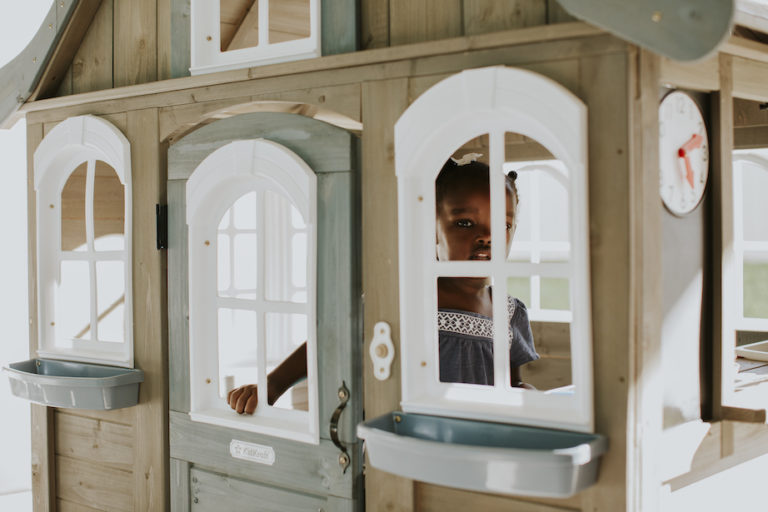Tiny houses are cute and economical, for sure. But are you prepared to do what it takes to get yourself into a tiny house and then actually live tiny?
Tiny houses have captured the imaginations of diverse people all over the world as a response to housing shortages, big mortgages, ballooning rents, student loan debt, homelessness, and the specter of poverty in retirement. For many, it’s equally about low-impact, intentional living and building community.
Cynics dismiss it all as a trend. But from a front-row seat, it sure looks like a movement.
We went to the third annual Tiny House Fest Vermont and stood in line, in the rain, with thousands of people to squeeze inside some of the nearly 30 tiny houses that had rolled into the town of Brattleboro for the weekend. No one seemed to mind the rain. But the bigger tip-off that this crowd — from young hipsters with man buns to old hippies with gray ponytails — wasn’t merely curious was the packed learning session on “sanitation solutions.”
That’s right, folks: the typical tiny house doesn’t have typical plumbing.
The reality check inspired the test of tiny-readiness below. We also consulted Alek Lisefski. He built a tiny house on wheels (THOW) in 2013, and his website, The Tiny Project, is such a comprehensive resource that it’s gotten press from around the world. Although Alek sold his house to move to New Zealand (tiny house portability has its limits), he’s still doing tiny research and blogging from there.
So, can you pass the test?
1. Are you a minimalist?
Obviously, you’ll have to downsize your stuff. You know that. But do you really get what it means to live tiny? Have you been inside one of these things? Chances are, every tiny house interior photo you’ve ever seen was taken with a wide-angle lens.
While there aren’t any rules, per se, what most tiny enthusiasts refer to as “home” is 120 to 200 square feet and on wheels. After all, part of the appeal is being able to take your house with you when you want a change of scenery. Or when you get caught flouting zoning regulations (keep reading for more on that).
Now consider that the average new home has 125 square feet of closet space.
“You’ll need to pare down to the essentials and really learn what you need vs. what you want, or what you might be used to in a traditional house,” said Alek. “Be prepared to keep only what you love and only what’s high quality.”
2. Are you trailblazer material?
Tiny living is new and experimental. The well-worn steps to homeownership don’t apply. Are you ready for the legal obstacles (more on that below), raised eyebrows, frustration, and surprises you’ll encounter along your tiny path less travelled? In other words, are you ready for an adventure?
“I’d say the mindset is someone not afraid of what others might think, willing to live outside of the mainstream,” said Alek. “With the legal gray area most people find themselves in, it takes a bit of a rebel or someone okay with a bit of uncertainty.”
3. Do you have at least $20k to $30k in cash?
That’s probably the minimum price tag to expect on a tiny house. And that’s if you build it yourself, with modest materials.
Most people who live tiny are trying to avoid the debt of the standard American lifestyle. But even if you’re willing to take on some debt, it’s hard to get financing for a THOW. Since it’s on wheels, it’s considered personal property, like an RV — not real estate. It’s also a “flight risk,” you might say.
“What happens if the borrower doesn’t pay?” said Dan Yates, president of Brattleboro Savings & Loan, during the learning session on financing at Tiny House Fest Vermont. “We look for collateral. You can simply disappear into the sunset.”
Part of the problem is that most banks view tiny homes as a fad, he said. They won’t look past the tiny factor and just assess you as a borrower. Locally controlled banks are the place to start if you do need financing, because they might have the flexibility and the willingness to get creative about it.
“We make all our decisions right here in town. It makes finding solutions easier,” said Yates, who by the way looked very much like a flexible small-town Vermont banker with his handlebar moustache, checked button-down shirt, jeans, and sandals.
4. Do you have the time and the stamina?
The investment of time and emotional energy shouldn’t be underestimated either. Especially if you build a tiny house yourself.
“Many people do DIY at least part of it,” said Alek. “Even if you hire a builder, all the research that goes into figuring out the design and features you need is still a lot of work. If someone is building, it’s not just the physical part that is hard, but it’s very emotionally and psychologically taxing too.”
5. Do you have a place to put your tiny house?
Falling in love with a tiny house is almost as easy as falling in love with a tiny dog, but you can’t keep a tiny house in your purse. Do you own land? Do you have family or friends who are willing and able to let you park on their property? Alek confirmed that parking is “by far the biggest hurdle” for most people who want to live tiny.
Further, in many places around the country, there are legal and zoning obstacles to living tiny. Strange as it might sound, zoning laws often require a minimum size. Vermont is fairly rural and freewheeling. You might be all set with a solar panel and an outhouse. But just over the border in Massachusetts, some municipalities forbid mobile homes of any kind. You need a permanent foundation and public utility hookups — not what most tiny-life enthusiasts have in mind.
The American Tiny House Association is among those working to make tiny living legal across the country. In the meantime, it can be tough. But we refer you back to the trailblazer question. As Alek said, “If you need to be sure you have legal parking before you consider beginning to build, you may never start. It takes some guts and faith that things will work out in the end.”
“A big factor,” he said, “is just making sure all your neighbors are cool with it, as enforcement for this kind of thing is complaint-based. Finding parking takes someone willing to put themselves out there, network, go door-to-door if needed. The good thing is this often fosters a great sense of community — something very lacking in places.”
Most people find a way to make it work, he said. “Often that means maybe living a little farther from a city center, in a more rural area where the chances of finding a spot are more likely and zoning and other restrictions may not be as tightly enforced.”
6. Are you and your partner really, really close?
If you’re paired up, there’s no escaping the fact that there’s no privacy in a tiny house. Are you prepared to share such a small space? To constantly navigate around each other?
Alek himself shared his tiny house, and he’s devoted entire talks to tiny house living and relationships. “It often intensifies relationships — both the good and the bad — which can be difficult at first,” he said. “It requires even more compromise than is needed in a relationship to begin with. But most couples find it brings them closer together. Except for the few that break up over it.”
7. Can you deal with a composting toilet?
Like we said earlier, you won’t have plumbing. Most homebuyers are interested in whether the toilet is American Standard or Toto — not what they’re going to do with the stuff that goes down it. But the Tiny Fest session on sanitation drew at least 100 people.
You’ve probably never had to think about what to do with your own waste. But it’s part of living tiny, not to mention living more consciously and sustainably. After all, when you flush a toilet, your waste doesn’t really go away. You simply move it somewhere else — using clean drinking water no less. No more pretending when you’re living tiny!
“Composting toilets are not bad at all once you get used it,” said Alek. “In just a few days usually, it becomes normal. But it can be weird for some people at first. You may need to build a compost pile in your yard or find other ways to dispose of waste, depending on your living/parking situation.”
8. Are you willing to forgo building equity?
Many of us buy a home partly because we hope to build equity over time. Will your tiny house increase in value, like a traditional house? Or will it actually decrease in value, like an RV? The tiny house movement is too new to predict resale value.
“A tiny house will never appreciate like a traditional house if there’s no land attached to it,” said Alek. “But being built more like a house, it should hold up far better than an RV. I actually sold mine when I moved to New Zealand and got nearly what I wanted for it. But I’ve also heard of others who struggled for a long time to sell theirs.”
While equity might be uncertain with a tiny house, the lifestyle is almost guaranteed to shrink your expenses. As Alek pointed out, you could bank a lot of savings in five years. And let’s not forget that equity building is never guaranteed. A decade has passed since the housing bubble burst, and millions of homeowners are still underwater on their mortgages.
How did you do?
If you answered yes to all eight questions, you just might be ready to roll. You can start by browsing our tiny house resource guide (we got some help from Alek on that too). May the tiny gods be with you!
Not tiny-ready? Maybe you’re inspired to at least pare down a bit. Get started with our post on how to conquer your clutter.




